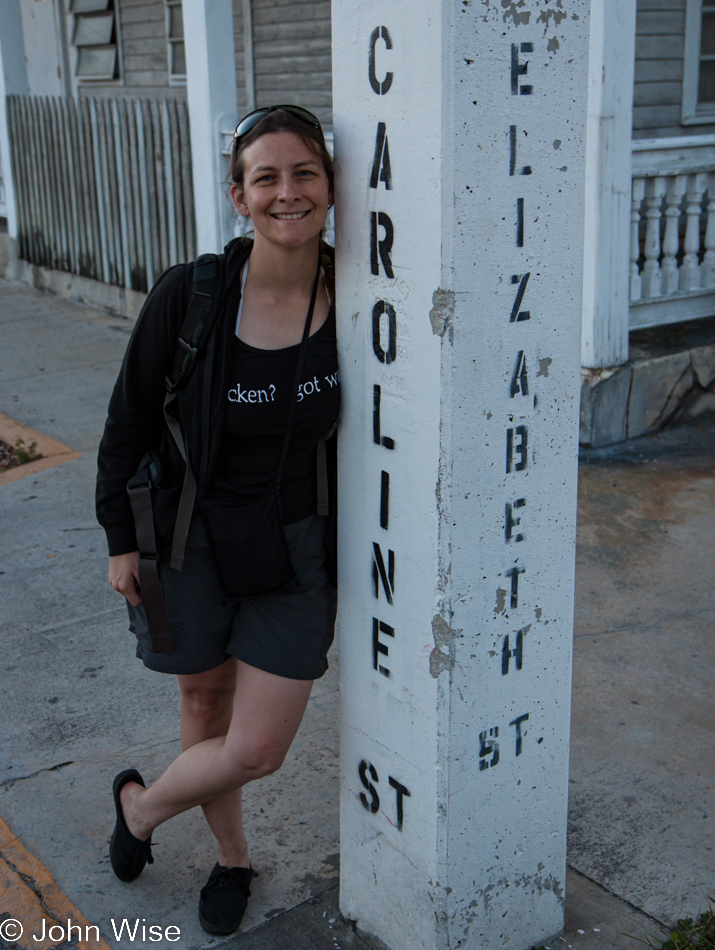
Disclaimer: This post is one of those that ended up being (partly) written years after the experience was had. While there were a few paragraphs posted way back then with a small number of photos, there were no other notes taken, so most of what is shared here must be extracted from the images and what memories they may have lent us.
After a comfy sleep and an early morning alarm at the Banana Bay Resort in Key West, we were quick to get ready for a speedy exit out the door for breakfast to get our day underway. Denny’s was about our only option, and lucky for us the one and only Starbucks down here in Key West opens at 6:30. For those of you who don’t know, Elizabeth is Caroline’s middle name.
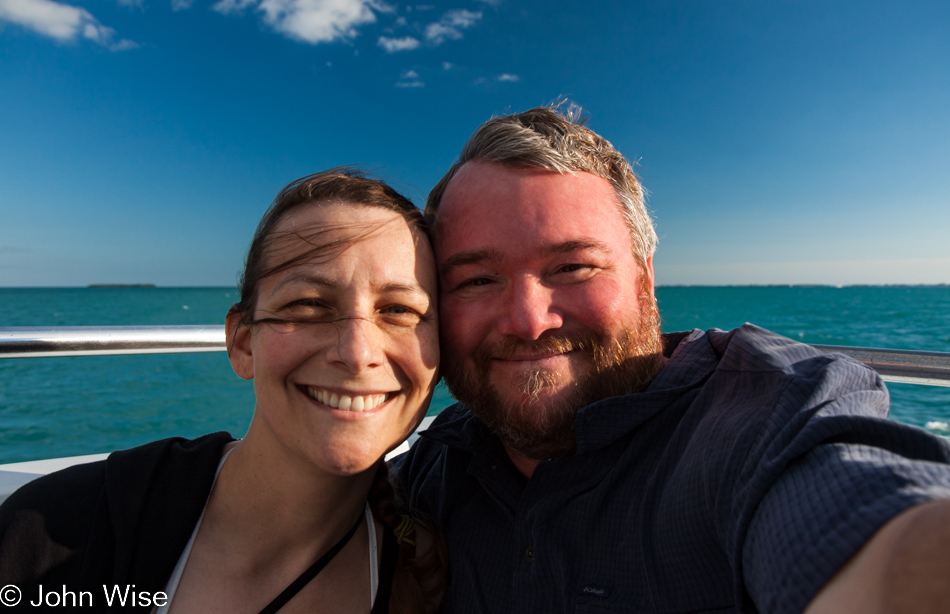
Check-in is at 7:00 with Sunny Days for our Fast Cat transport out to the Dry Tortugas National Park. Don’t worry, tourists desiring a day trip to the island, the normal line-up is 8:00 while this earlier time is for campers.
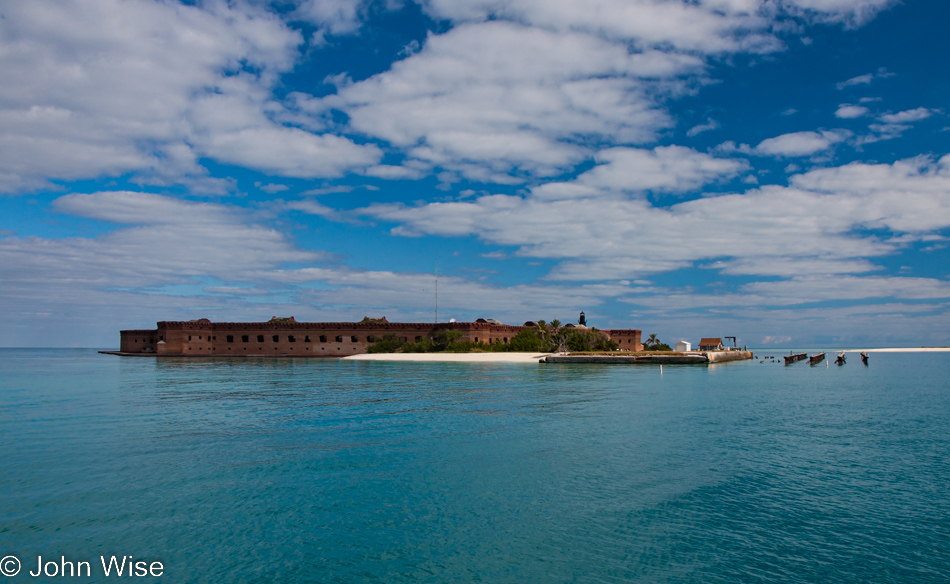
Fort Jefferson on Garden Key is the main attraction here in the Dry Tortugas National Park. This remote island is a mere 16 acres in size. As we approached, the fort appeared to sit right on the water.
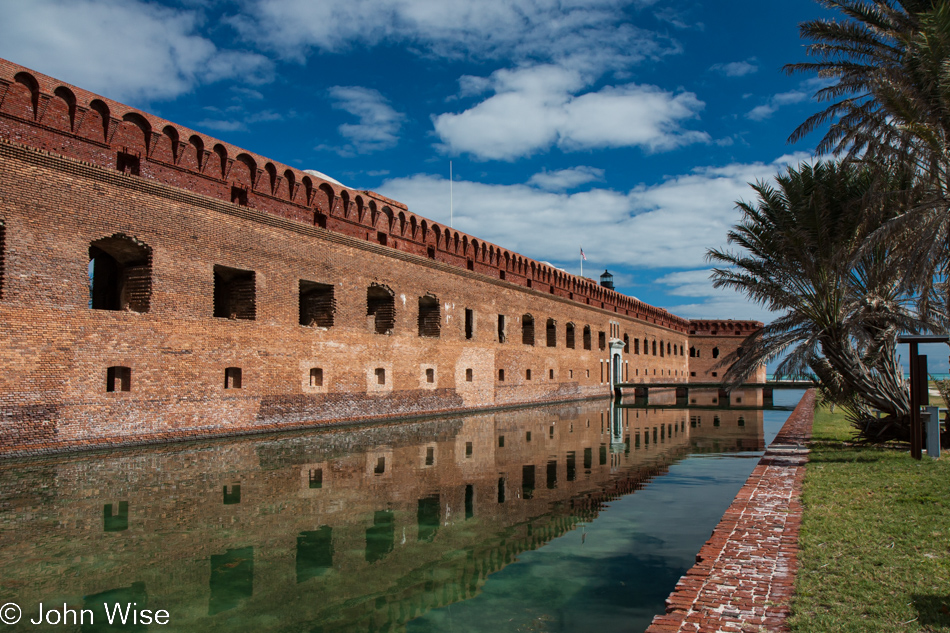
A low wall rings this all-brick structure, building a moat along its six sides. Construction of the fort began in 1846, but with its remoteness, lack of fresh water, and frequent hurricanes, the fort was only half-finished by 1860. The buildings were turned into a prison until the mid-1870s, and later, the place served as a refueling station until it fell out of use for the most part.
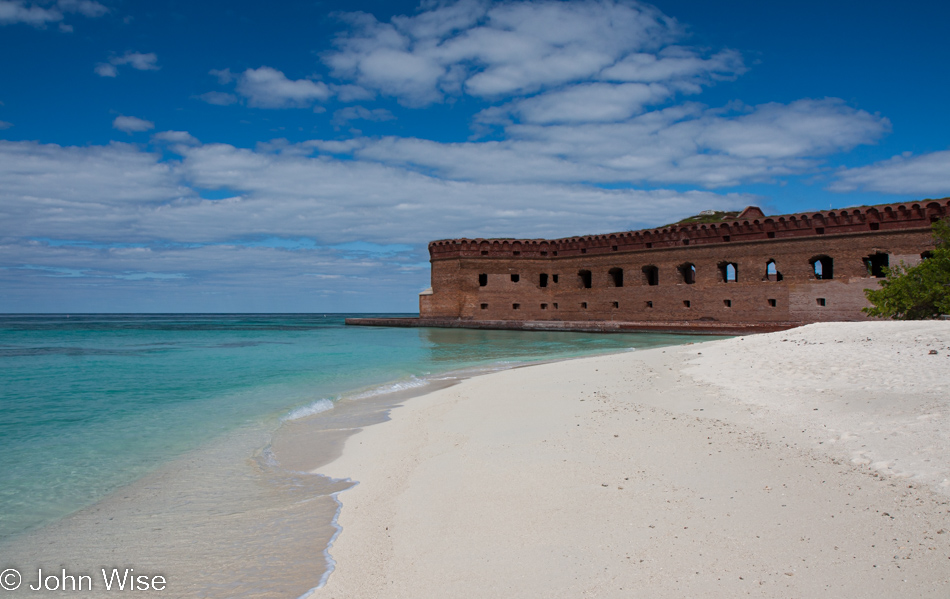
While the majority of visitors were on a tour of the main building, Caroline and I set up our tent at camping site number 5 with an incredible western view of the ocean, perfect for watching the sunset.
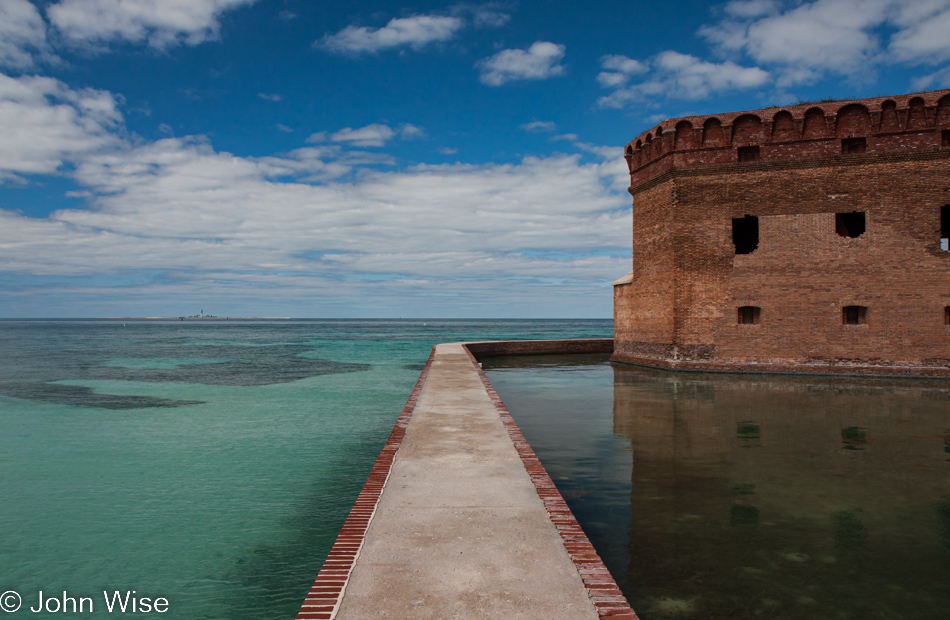
After a slow, quiet walk around the sea wall, it was nearly lunchtime aboard the catamaran that brought us out here. Many of the seventy or so other passengers now went snorkeling while Caroline and I had the fort to ourselves.
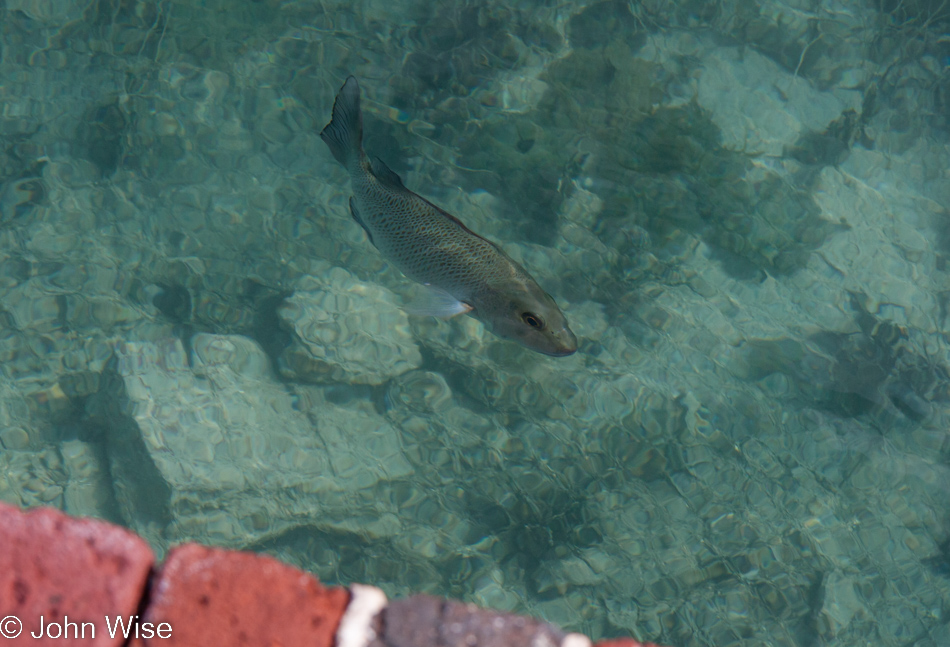
The welcoming committee.
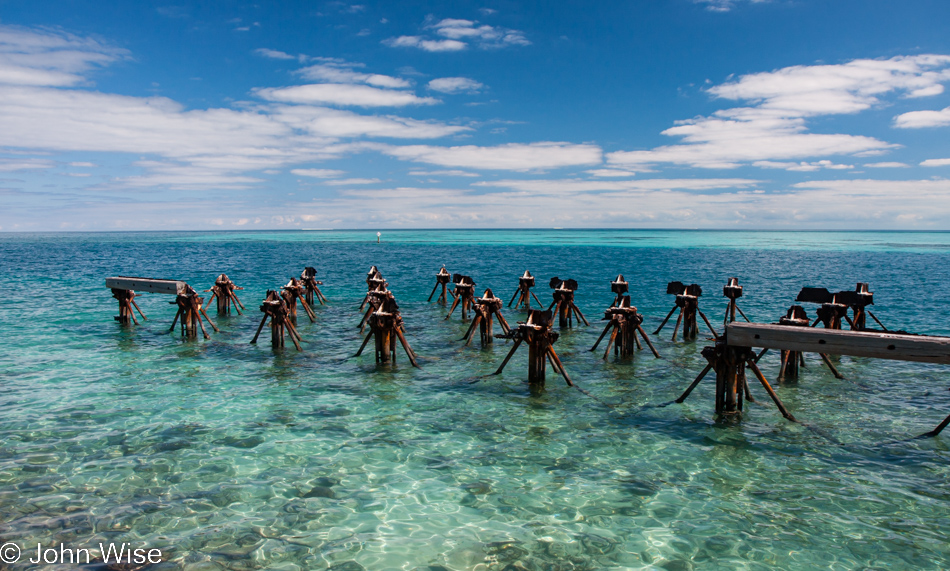
This is the point in my updated post where the writing jumps forward to 2022; there are more original notes below that were posted in 2009, but first, an update about our good fortune to have been here in 2009. We arrived at the Dry Tortugas a year before Instagram launched and started its march towards ruining many beautiful places on earth, and apparently, the Dry Tortugas is one of those places that has found a kind of popularity that neither Caroline nor I would enjoy today. You see, if you want to camp on this island today, you’ll be lucky to find a reservation a year out. That means that every single day of the year, every campsite is taken.
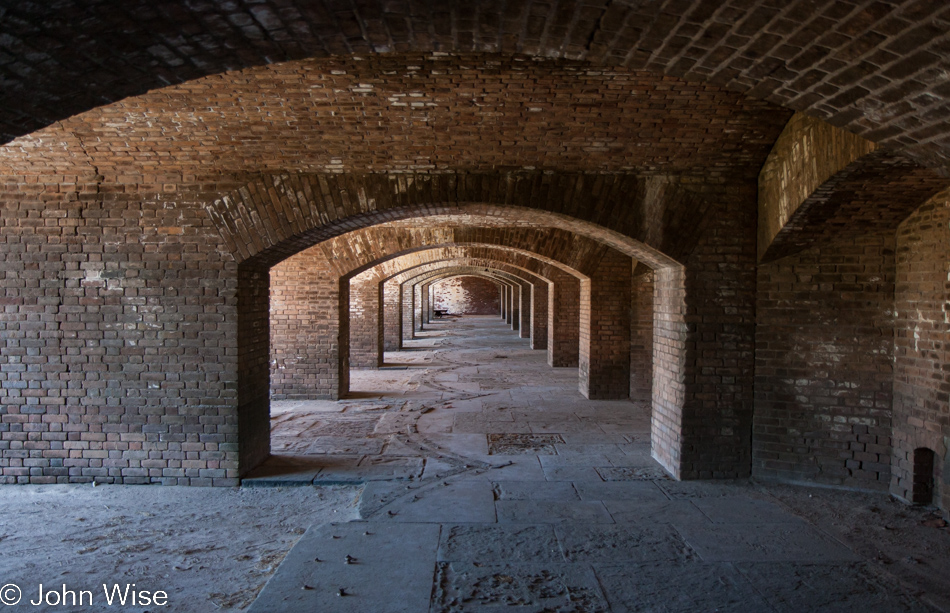
Below I write about a group site taken by fishermen while we were here; they arrived with their own boat a day before us and were out on the sea until just after we tucked into our tent, so it was like they weren’t even here. The other small group I referenced was just a few people at one of the other sites. We felt really alone out here, and I think that sense might be gone now.
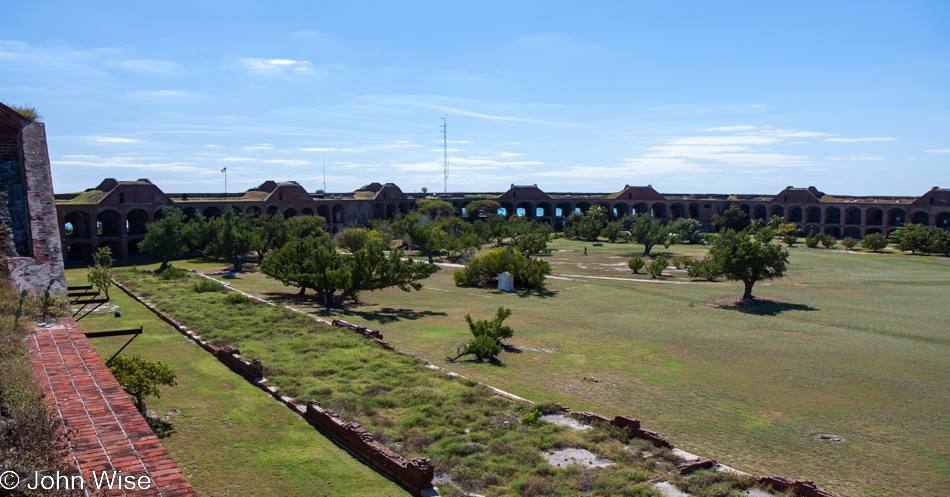
If there were to be a regret, it might be that we didn’t understand how much we enjoyed kayaking and that we would have benefited from having a couple of them with us, along with another night out here so we could have paddled over to Loggerhead Key to visit the lighthouse and simply indulge in more of the solitude we experienced in such a remote place.
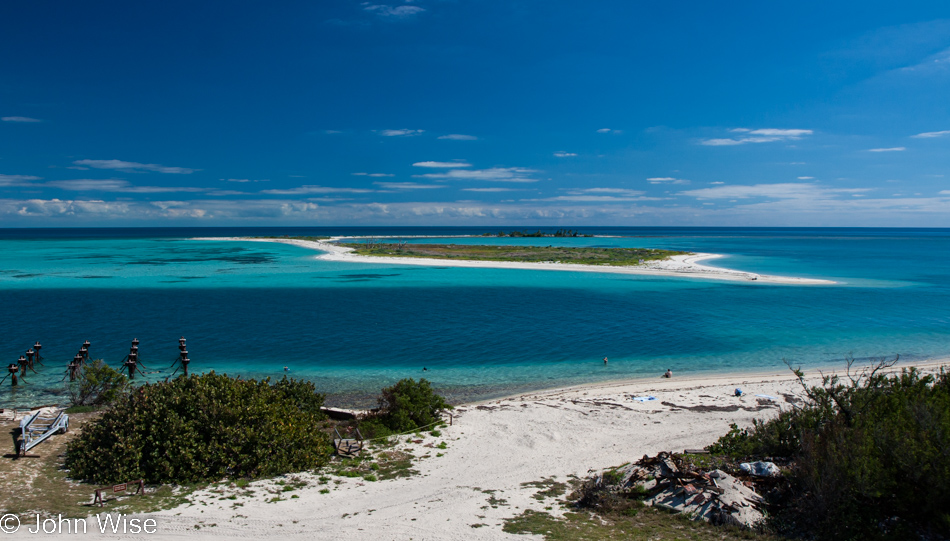
A nearby bird sanctuary was off-limits to visitors. When I wrote this previous sentence in 2009, I said, “…is off-limits,” which I now changed to was off-limits as the channel between Garden Key, where we are, and Bush Key across the way, which is currently connected.
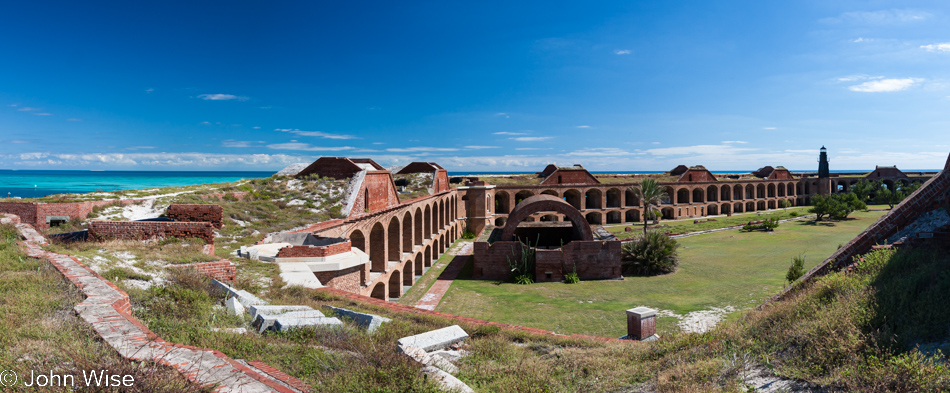
What a scary place this would have been to be stationed when tropical storms or hurricanes whipped through the area 100 years ago, but today, it’s blue skies and calm ocean for as far as the eye can see.
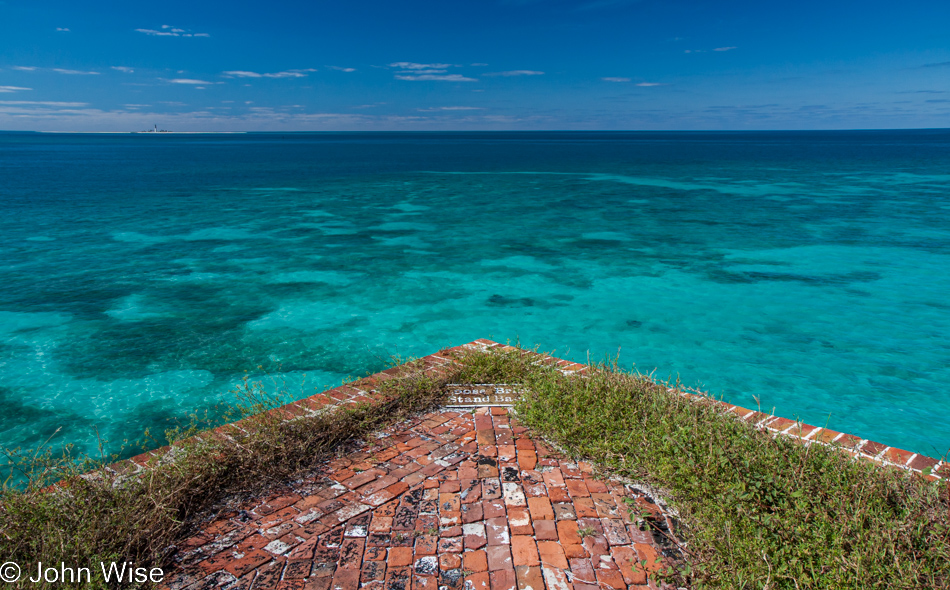
While almost impossible to see, to the left on the horizon is the Loggerhead Lighthouse.
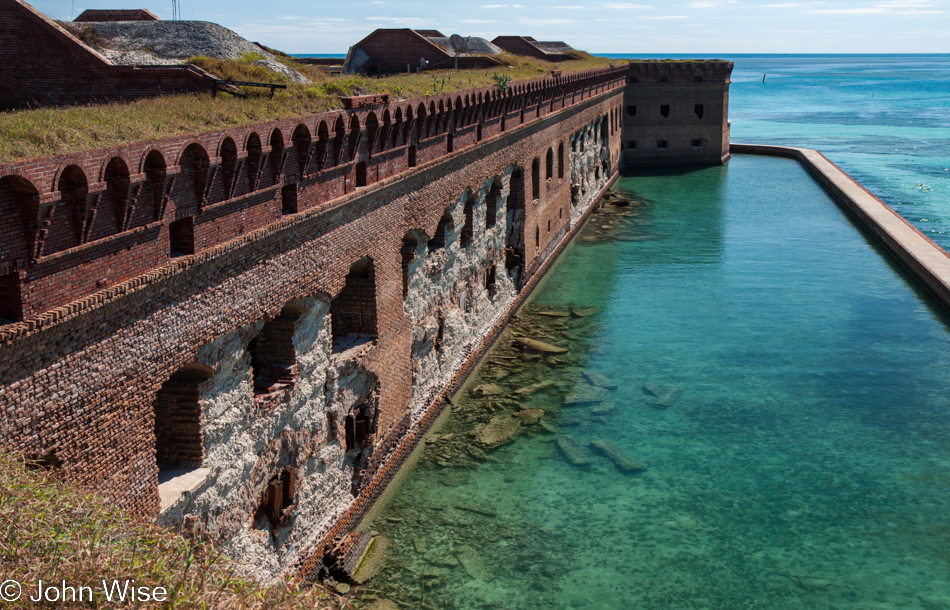
Storm damage is taking its toll, and while there are signs that some things are being repaired, it’s easy to get the idea that others are being allowed to continue falling into decay.
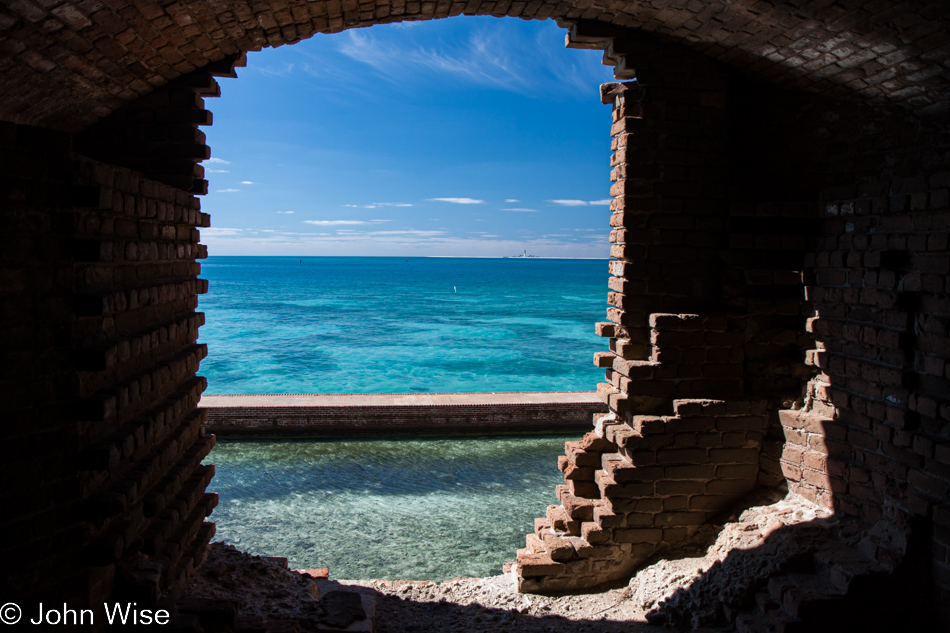
It’s obvious that a single day will never be enough to explore everything here.
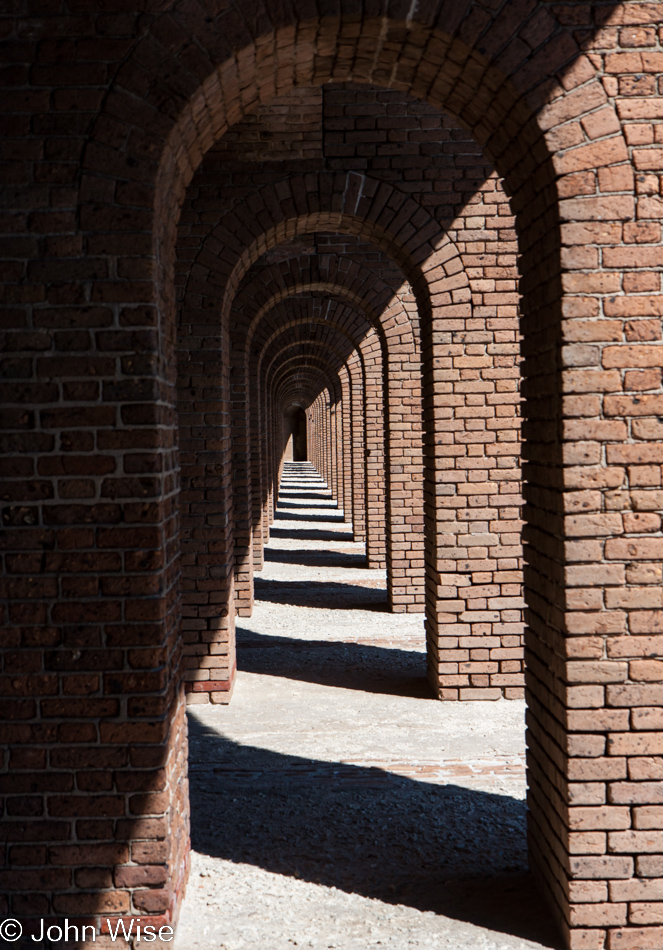
By the way, this is the largest brick structure in our hemisphere and is constructed from more than 16 million bricks.
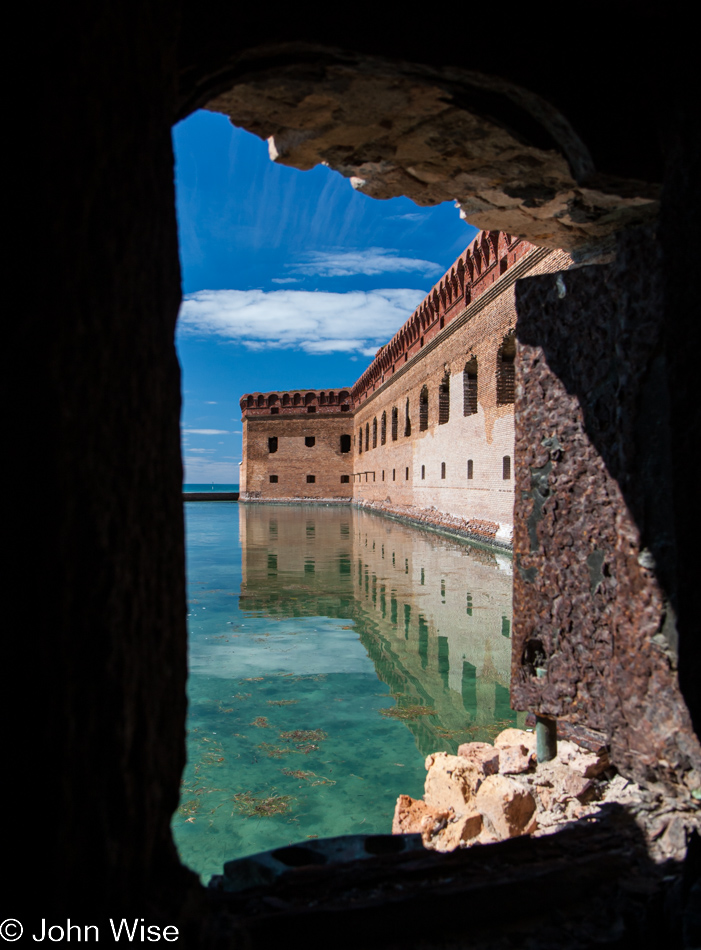
This is not a deserted island either as there are at least a few people that live here who work for the National Park Service. Had there been a way to see how the old brick rooms were being used as apartments, we would have jumped at the chance; the quiet inside of them at night must be astonishing.
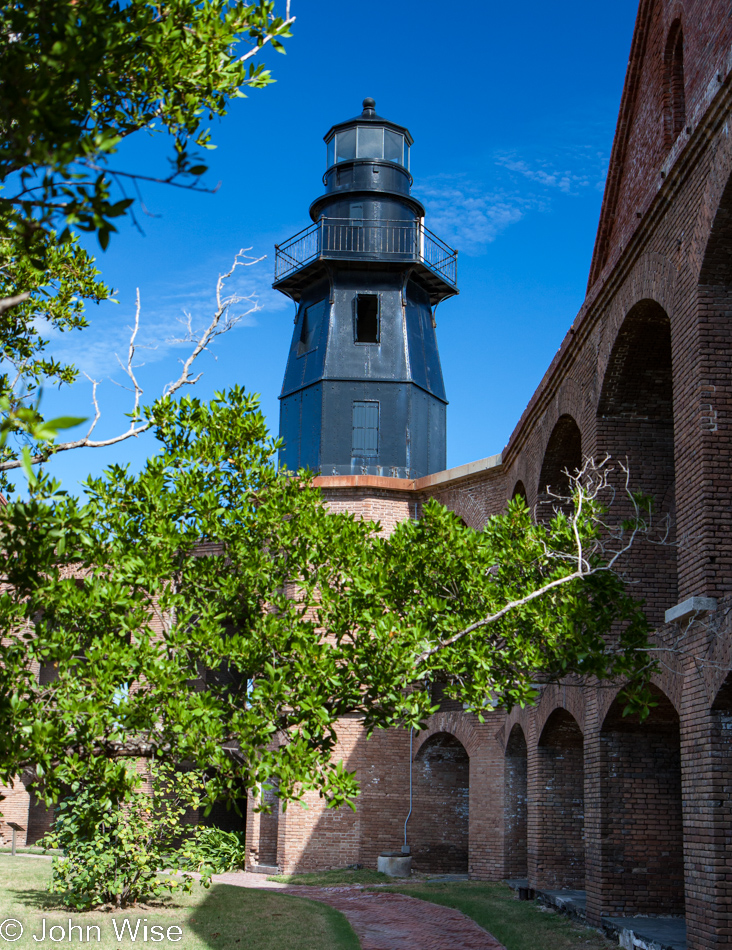
This old lighthouse predates the fort and was erected here back in 1825, while construction of the fort began in 1846. To let you in on a secret, we might have been so lucky to get a tour on the low-down of this old lighthouse later in the evening but I won’t swear to that as they are not allowed, just saying.
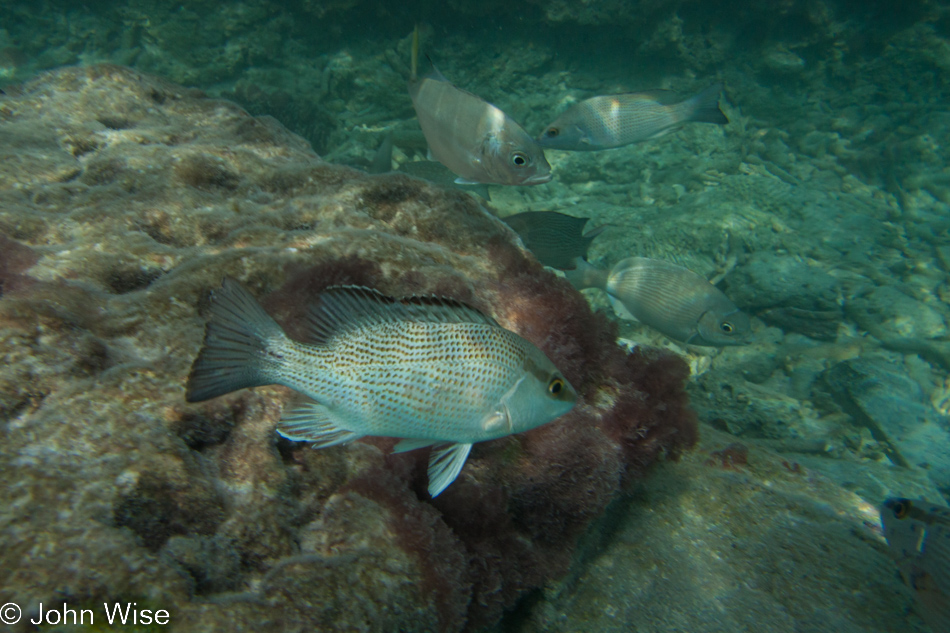
It wasn’t long before 2:30 p.m. rolled around, and the day visitors were leaving the island. There was a small group of campers who set up near us while the group campground had a few tents already set up but the fishermen who were staying in those were out for a day of fishing.
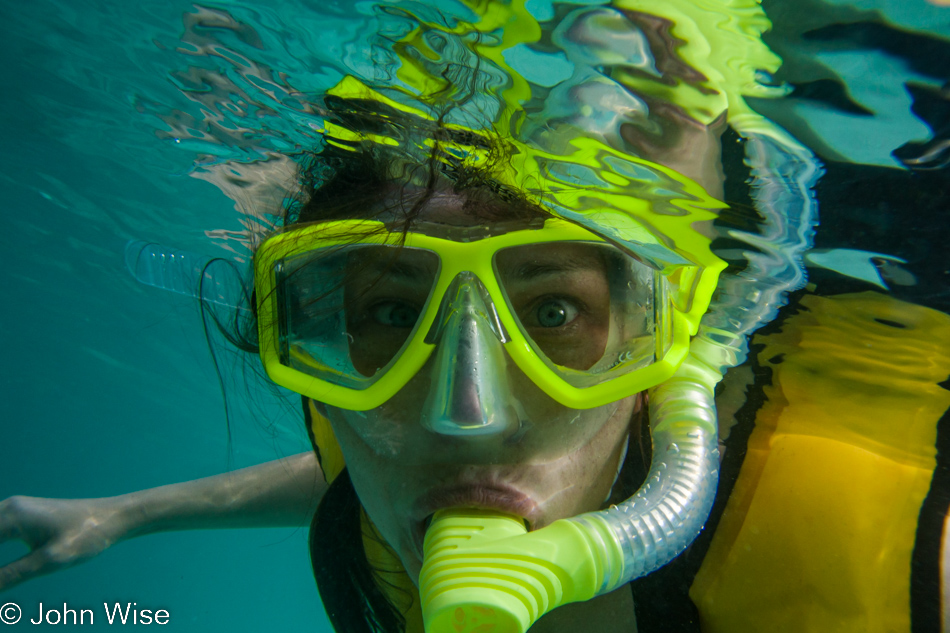
With no one else in sight, we grabbed our snorkel gear and jumped into the warm Gulf of Mexico waters.
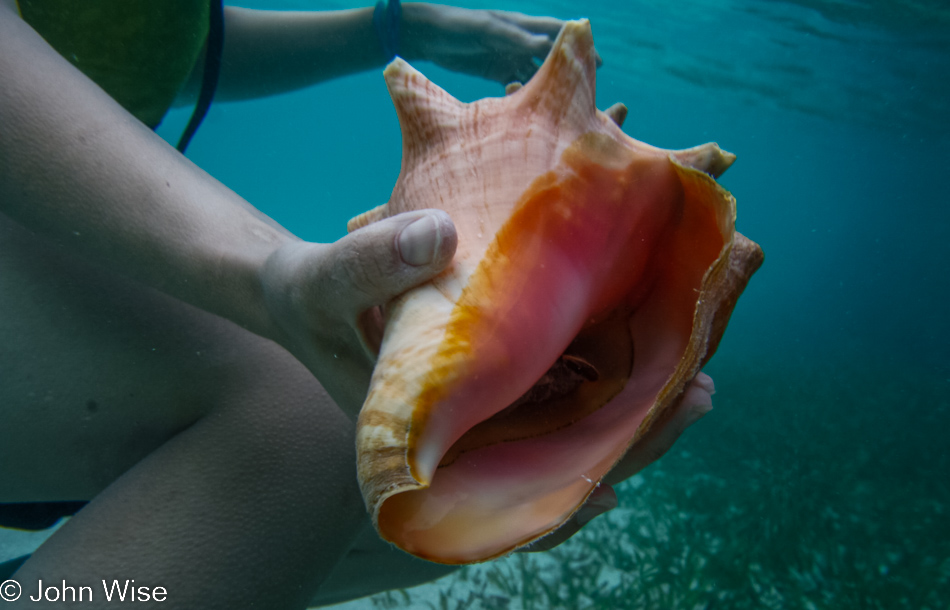
We had the clear waters of the Dry Tortugas all to ourselves. Over corals and past jellyfish, we floated along the perimeter wall inspecting conch, sea urchins, parrot fish, and dozens of other fish varieties.
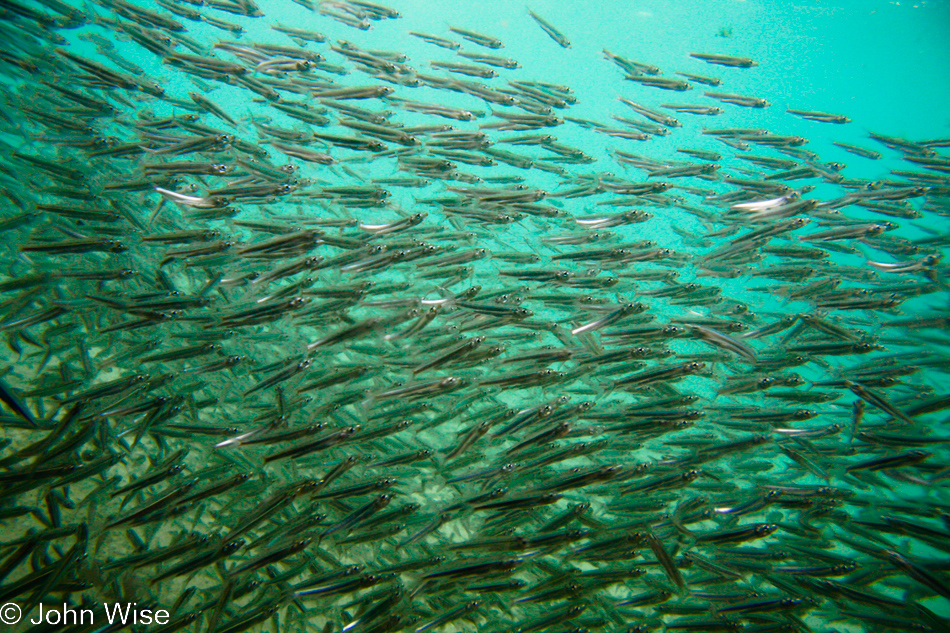
Out of the water and over to North Swim Beach we slip into the water and are surprised, overwhelmed, and thrilled to quickly find ourselves swimming through a school of thousands of fish. The small fish would swim around us, dart to and fro as they avoided other larger fish that may have been intent on feasting on these little guys. We could have stayed here all day watching the flashes of silver glistening in the reflected light of the sun shining down on the sea. Matter of fact, this is nearly just what we did and it was almost 5:00 before we exited our underwater wonderland.
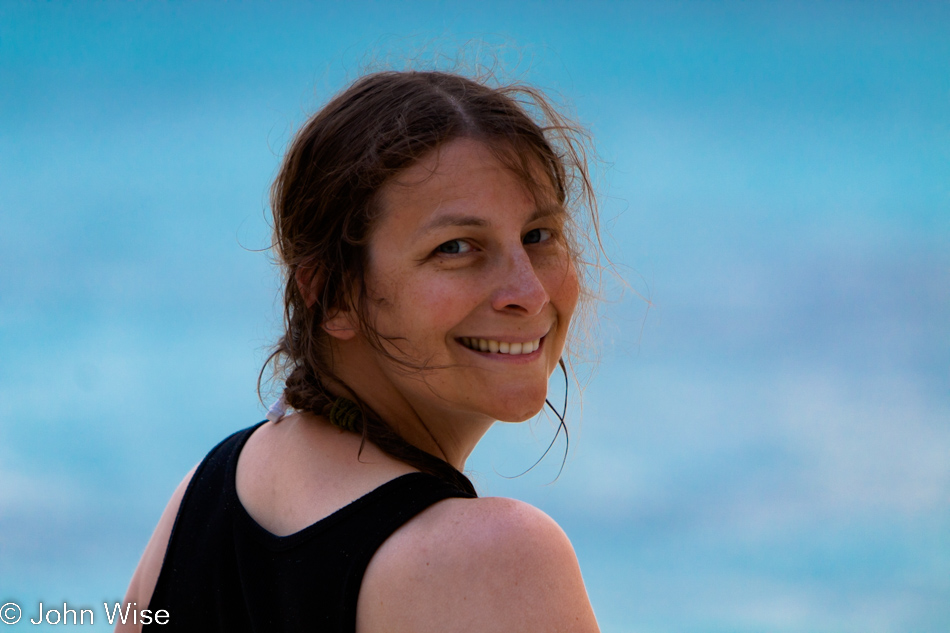
After more than two hours of snorkeling, we needed a break and thought it was a good time to prepare dinner for our sunset feast – on peanut butter and jelly sandwiches. As we would only be on the island one night, we had opted for simplicity in bringing our small tent, one sleeping bag that we opened and both slept on, along with one cotton blanket for keeping warm. With lows in the mid-70s (24c), I didn’t think we’d be chilly.
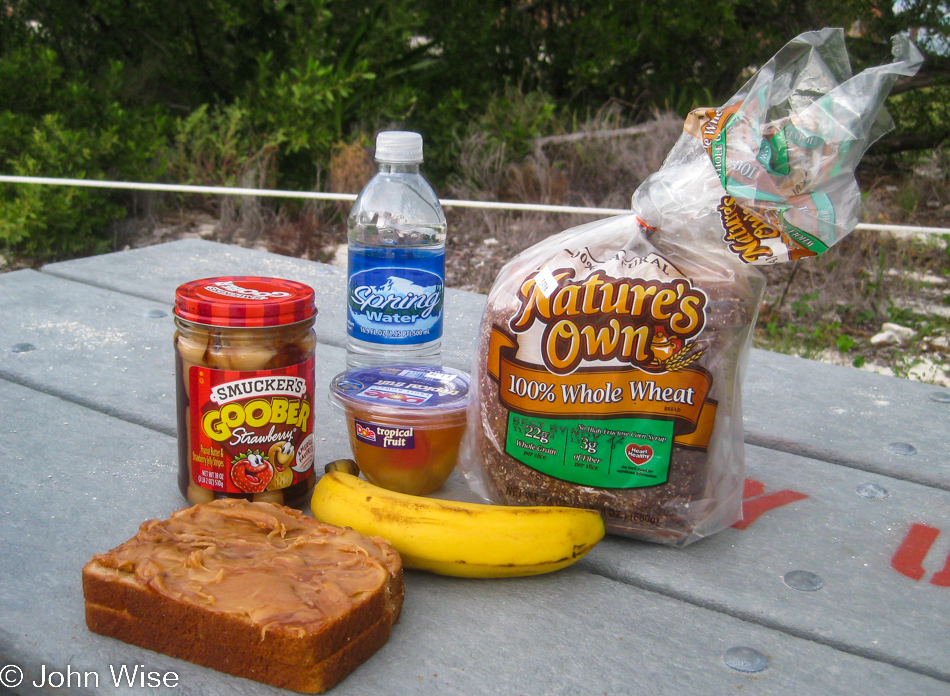
Our food choice was made just the night before at a local grocery after finding inspiration in a jar of Goobers PB & J – this stuff is a mix of peanut butter and jelly all in one jar; check it out here. We also bought some bananas to add to the sandwiches and to enjoy with our breakfast of Clif Bars the next morning.
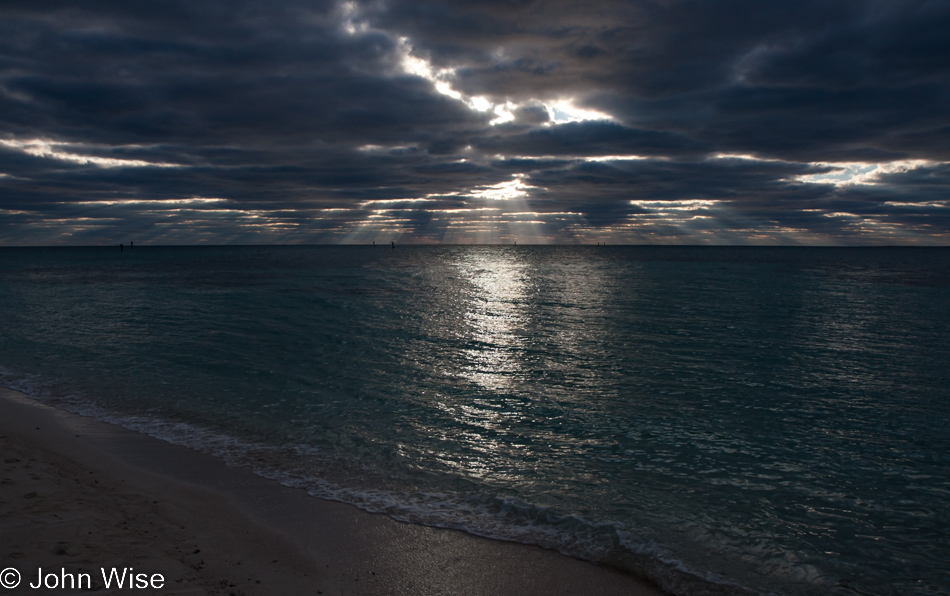
The late day brought in a good cover of clouds, none of them threatening poor weather. From time to time, the sun would poke through, casting a beautiful golden light upon the calm ocean. At other times, the sun would spread distinct rays across the horizon as we sat in the sand, oohing and ahhing at how gorgeous all of this was. The view is from campsite #5.

Be careful where you walk at night as others much smaller than you might be out for a stroll too. We probably watched this little guy for a good half-hour; what an unbelievable encounter with wildlife today.
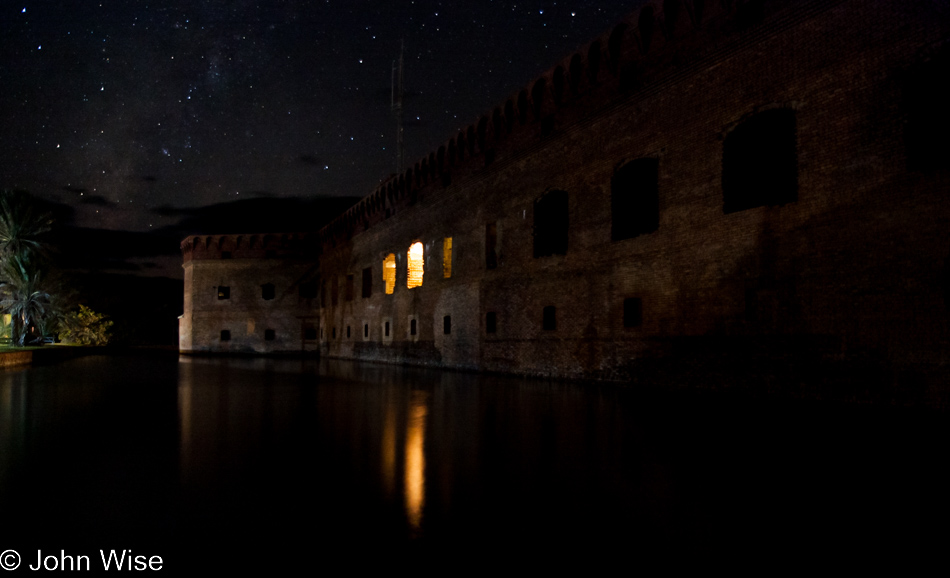
Not to forget to tell you of the stars we saw this evening, but look close, that’s the Milky Way over on the left. I’d love to share more about the night sky out here in the middle of the Gulf, but that would take another complete blog entry.
Doesn’t even look real.
Breathtaking gorgeous!!!!! I am sure it was beautiful.